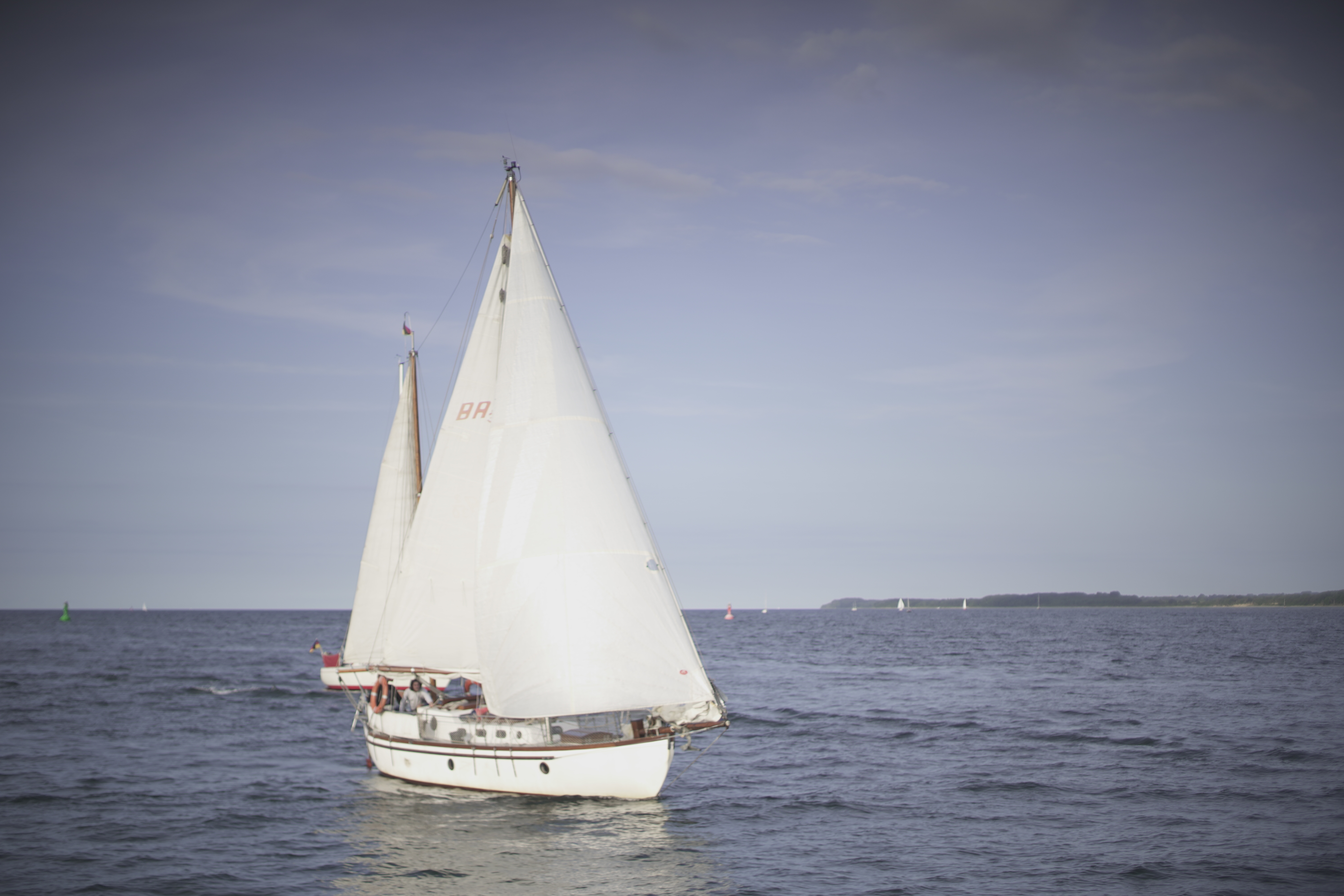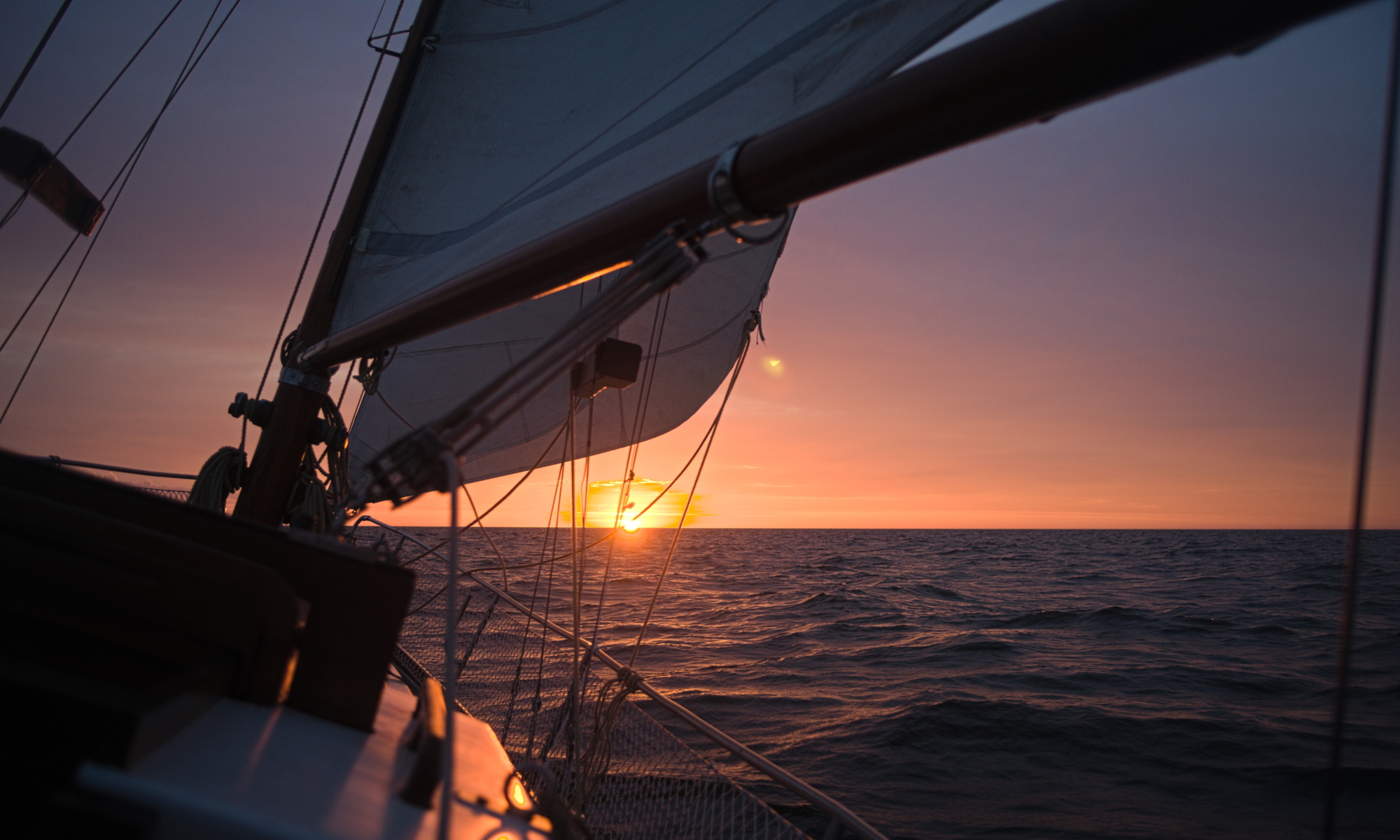General
Type:
Constructor:
Built:
Material:
Length:
Beam:
Height:
Engine:
Draft:
Weight:
Hillyard 33
David Hillyard
1930, Southampton
wood, covered with fiberglass in the ’70s
10,05 m
2,75 m
12,5 m
Perkins 4.108, 50 HP
1,75 m
10 t

Rig
Sindbad is rigged as a ketch. Consequently it has two masts, a main mast and the smaller mizzen mast in the aft. Like a cutter the main mast has three sails. The main sail with two reefs, the forestay can be used for a working jib or the genoa. Moreover it carries a baby stay for small storm jibs. Fortunately, the forestay is a twin forestay. Thus it is possibly to set up tradewind sails as a comfortable variation of tradewind sailing. The smaller mizzen mast in the back is only about 8 metres high and used for the mizzen sail which serves the stability of the boat and the course, especially for high swell and tight winds. All in all the ketch rig works very well for cruise sailing and I am very happy about having this rig for my clean tour around the world.
The reliable powerhouse: Perkins 4.108M
At the heart of Sindbad’s reliable performance and self-sufficiency lies the robust Perkins 4.108 marine engine. With its 50 horsepower, this engine serves as a steadfast companion throughout the voyage, providing the necessary power for propulsion and ensuring backup in challenging conditions.
Dependability and Self-Sufficiency
The Perkins 4.108 marine engine is renowned for its reliability and durability. I dedicate significant time and effort to maintain and repair the engine, ensuring its optimal functioning even in the harshest conditions. By honing my skills and knowledge of the engine’s intricacies, I strive to be self-reliant, capable of addressing any potential issues that may arise during our oceanic adventures.
Independence at Sea
While the Perkins 4.108 engine is a powerful tool, it is important to note that I do not intend to rely on it extensively. Instead, I view the engine as a backup, to be used in specific cases such as maneuvering or during special situations. My goal is to embrace the wind and harness the power of sailing, relying on nature’s forces as much as possible.
Saving Resources
One of the primary reasons I invest my time and effort in maintaining and repairing the engine is to conserve resources. By extending the lifespan of the Perkins 4.108, I reduce the need for frequent engine usage, minimizing fuel consumption and carbon emissions. This commitment to environmental sustainability aligns with our overall mission to promote responsible and eco-friendly sailing practices.
Financial Efficiency
By utilizing the Perkins 4.108 engine sparingly, I can optimize its fuel efficiency and reduce operational costs. By relying primarily on wind power, I minimize the need for refueling and can allocate financial resources towards other essential aspects of our journey. This financial efficiency allows me to invest in sustainable equipment, essential provisions, and environmental initiatives that support my commitment to preserving the oceans we sail upon.
Conclusion
The Perkins 4.108 marine engine, while powerful and reliable, is intended for selective use, serving as a backup in specific situations. My emphasis remains on embracing the wind, harnessing nature’s forces, and sailing in harmony with the environment. By maintaining and repairing the engine, I ensure its readiness for maneuvering and special circumstances, while maintaining our commitment to resource conservation, financial efficiency, and sustainable sailing practices.
It’s a Perkins, it will always start.
Palle, danish engineer
